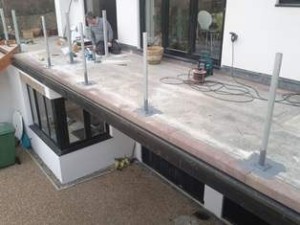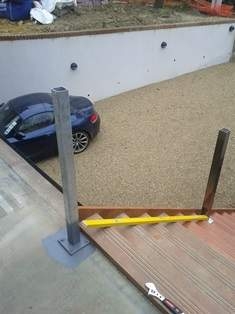 Many balcony areas and terraces are created above living spaces, whether on a flat roof above an extension or living space, kitchen or bedroom or on the top floor of an apartment complex.
Many balcony areas and terraces are created above living spaces, whether on a flat roof above an extension or living space, kitchen or bedroom or on the top floor of an apartment complex.
Great attention needs to be given to sealing the balcony surface and waterproofing it.
An essential part of the building works
Balcony waterproofing is needed for preserving your any area underneath the balcony from any perennial water ingression damage. In areas susceptible to snow or frequent rainfall waterproofing the balcony surfaces is an essential part of the building works and cannot be taken light-heartedly.
A recent statistical survey has shown that “Balcony Waterproofing” has the highest failure rate of all the areas in the building envelope.
Whereas a mere 1.8% of the total cost of the build is actually spent on waterproofing balcony areas, these account for a staggering 83% of building defect complaints.
Sealing flat roof balcony areas, balconies on top of rooms and terrace areas waterproofing should be a well thought out process and applied correctly from the outset; the consequences can otherwise be severe.
Keeping a balcony safe from water
There are lots of new technologies and materials available but also different methods are available that can keep your balcony safe from water. Balcony surfaces are made using concrete or timber roof with a layer of waterproofed material that cover and guard that substance. Concrete structures face different issues than timber or steel construction and materials for one may not suit the other. Many a time you may face the problem of repairing your balcony surface over and over again if you have not used a proper system or the waterproofing was performed in a poor way.
Accumulation of calcium crystals and salts that disfigures the top edges or underside of masonry is known as “Efflorescence” and this cannot form in the absence of water. The material chosen should have the correct amount of expansion capabilities as the materials around them and they must be able to adhere to them and create a good bond and seal.
Correct sequence of works
 Penetrative work and fixing down must be performed prior to water sealing and waterproofing. If you are erecting a balustrade in these areas you will probably be required to have baluster posts that need to fix down to the structural element of the building. In cases such as these the sealant or balcony waterproofing material must be able to seal around these and remain bonded to the steel of the balustrade posts. Choosing a brittle substance will not be good as the steel will expand more than the substance and a leak could arise at that point.
Penetrative work and fixing down must be performed prior to water sealing and waterproofing. If you are erecting a balustrade in these areas you will probably be required to have baluster posts that need to fix down to the structural element of the building. In cases such as these the sealant or balcony waterproofing material must be able to seal around these and remain bonded to the steel of the balustrade posts. Choosing a brittle substance will not be good as the steel will expand more than the substance and a leak could arise at that point.
Very good materials for this type of sealing between two different materials are the polyurethane based sealants such as Sika flex 11FC. These materials have extraordinary strong bonding capabilities, are able to bond to different materials (stone, steel, glass, rubber etc), have very high and low temperature resistance and are resistant to UV which is very good if the area is exposed to sunlight.
When fixing any material to a finished roof one must be very conscious of water ingression and must seal properly with proper materials.
Balcony waterproofing tactics
You might embrace several methods of waterproofing balcony surfaces such as using a waterproof membrane both below and above the screed or possibly sealing the exterior of the tiles and grout joints. There are different benefits for using a waterproofing membrane both below and above the screed such as the fact that it excludes moisture from the tiles and screed and has a much better capability of withstanding movement. Water must be channelled correctly as well, one must direct water to some other direction so that water does not stand and seep into the surface. This draining strategy will also help reduce efflorescence and any water leaking into tiling or the surface.
So be sure that you apply the following tactics to ensure good balcony sealing and avoid water ingression.
- Complete all penetrating works PRIOR to applying the waterproofing
- Choose a sealant or membrane material that suits your balcony structure, balustrade materials and roof materials
- Ensure any penetrating material are applied with an additional sealant that will create an additional seal on these.
- Make sure you have a good drainage plan worked out with the balcony levels so not water pools are created.
Remember to do this right from the start.
